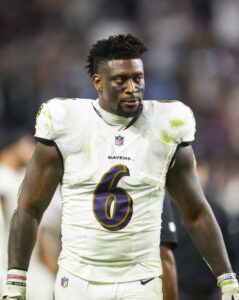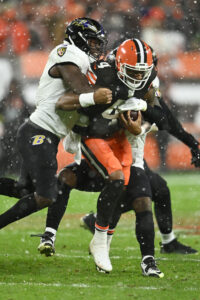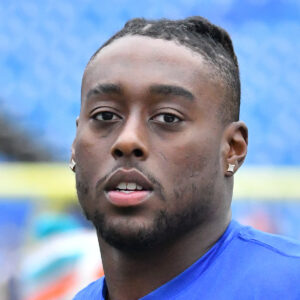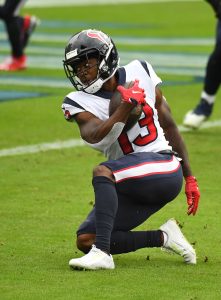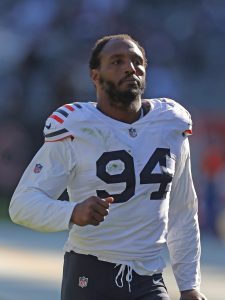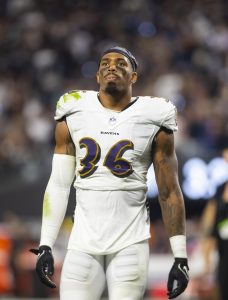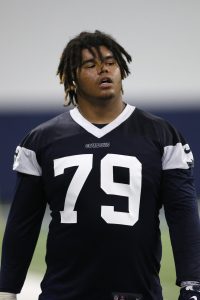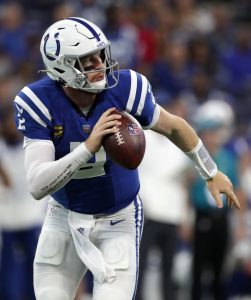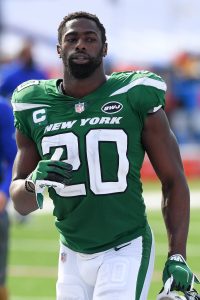Another slow start in Denver has brought about the latest round of trade talks involving the struggling team. Although Randy Gregory went for this season’s trendy low-end trade package — player/seventh for a sixth — and Frank Clark surfaced as a trade chip before being released, the Broncos’ top two wide receivers are again at the center of the trade rumors surrounding the team. With the Broncos at 1-5, they are likely not done moving pieces for draft capital.
In their third full season together, Jerry Jeudy and Courtland Sutton have each spent multiple Octobers in trade rumors. Sutton signed a four-year, $60MM extension in October 2021 but surfaced as a potential trade piece ahead of last year’s deadline. Jeudy, who remains attached to a first-round rookie contract, generated far more interest going into the 2022 deadline.
 Teams called the Broncos about Jeudy and Sutton last season, but GM George Paton stood down on both. With the presumed goal of the duo helping a retooled offense around Russell Wilson in 2023, the Broncos held onto their top weapons. While this season has not produced the offensive disaster 2022 did, the Broncos are still not where they want to be on that side of the ball. And both receivers have again come up in potential deals, as the Broncos are believed to be willing to listen on just about anyone not named Patrick Surtain.
Teams called the Broncos about Jeudy and Sutton last season, but GM George Paton stood down on both. With the presumed goal of the duo helping a retooled offense around Russell Wilson in 2023, the Broncos held onto their top weapons. While this season has not produced the offensive disaster 2022 did, the Broncos are still not where they want to be on that side of the ball. And both receivers have again come up in potential deals, as the Broncos are believed to be willing to listen on just about anyone not named Patrick Surtain.
The Broncos informed at least two teams — the Cowboys and Giants — their Jeudy pursuit was not sufficient to make a move. Denver was connected to wanting a second-round pick at that point, but this offseason, the now-Sean Payton-run team placed a first-round price on the 2020 first-round pick. Teams understandably balked at that, and Jeudy came into the season as the team’s expected top target. Success has largely eluded the shifty wideout, who has drawn criticism from former players for his unremarkable performance. Through five games (after missing Week 1 with a hamstring injury), Jeudy has just 20 receptions for 222 yards and no touchdowns.
Sutton’s 275 yards and four TD receptions lead the Broncos, and the team did not hold out for a first-round pick in exchange for the former second-rounder this offseason. Denver sought a second-round pick for Sutton, whose $15MM-per-year contract runs through 2025. The Ravens appeared close to making a deal in March, but talks slowed and the team pivoted to a $15MM guarantee for Odell Beckham Jr. While Baltimore’s OBJ signing has not panned out to this point, Sutton is highly unlikely to fetch a second-round pick. Jeudy will not score a first-rounder for the Broncos, and teams may be balking at the Alabama alum’s fully guaranteed $12.99MM 2024 option salary.
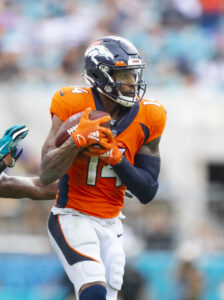 A 2018 draftee who developed behind former Denver dynamic duo Demaryius Thomas and Emmanuel Sanders, Sutton has a 1,000-yard season under his belt. That came back in 2019, with a Joe Flacco–Brandon Allen–Drew Lock QB platter targeting the 6-foot-4 receiver. Even as the Broncos’ offense cratered to last place under Nathaniel Hackett, Jeudy posted 972 yards and finished the season strong, recording three 100-yard games in his final five.
A 2018 draftee who developed behind former Denver dynamic duo Demaryius Thomas and Emmanuel Sanders, Sutton has a 1,000-yard season under his belt. That came back in 2019, with a Joe Flacco–Brandon Allen–Drew Lock QB platter targeting the 6-foot-4 receiver. Even as the Broncos’ offense cratered to last place under Nathaniel Hackett, Jeudy posted 972 yards and finished the season strong, recording three 100-yard games in his final five.
Unavailability has largely defined the Broncos’ 2020s receiver blueprint. Sutton suffered an ACL tear in Week 2 of the 2020 season, starting a pattern of injuries that kept the Broncos from fully deploying their planned wideout array together. A reliable target in 2020 and 2021, Tim Patrick also signed an extension in November of ’21 (three years, $30MM) but the 6-4 possession target has suffered ACL and Achilles tears during the past two training camps. The injuries obviously leave the former UDFA’s Broncos future in doubt. Patrick’s injury came after KJ Hamler ran into another health issue, seeing a heart problem lead to a cut. While the Broncos left the door open to the former second-rounder returning, Hamler is now on the Colts’ practice squad. Jeudy has missed 10 career games.
Denver followed up one of the best receiver eras in franchise history — a five-season Thomas-Sanders partnership that involved lucrative extensions sandwiching the team’s Super Bowl 50 win — with what has amounted to a letdown. Payton has been unable to coax steady production from either thus far, and moving one of them appears likely — especially if losses continue ahead of the Oct. 31 deadline. A trade would open up more playing time for second-round pick Marvin Mims, who has shown flashes as a deep threat. The Broncos have not used the Payton-era pickup too often, however, playing him on just 97 snaps thus far. Mims’ 246 receiving yards still top Jeudy’s output.
 Jeudy, 24, is tied to a $2.68MM base salary this year. Sutton, 28, is attached to a $14MM base that will be much harder to move. Under Paton, the Broncos have shown a willingness to eat salary to facilitate trades. The Broncos paid all but the prorated veteran minimum to move Von Miller in 2021 (for second- and third-round picks) and did the same to send out Gregory earlier this season. Denver has also been this period’s most notable seller, having dealt Thomas in 2018 (to the Texans, for a fourth-round pick), Sanders in 2019 (to the 49ers, for third- and fourth-rounders) and Bradley Chubb (to the Dolphins, for first- and fourth-rounders, along with Chase Edmonds).
Jeudy, 24, is tied to a $2.68MM base salary this year. Sutton, 28, is attached to a $14MM base that will be much harder to move. Under Paton, the Broncos have shown a willingness to eat salary to facilitate trades. The Broncos paid all but the prorated veteran minimum to move Von Miller in 2021 (for second- and third-round picks) and did the same to send out Gregory earlier this season. Denver has also been this period’s most notable seller, having dealt Thomas in 2018 (to the Texans, for a fourth-round pick), Sanders in 2019 (to the 49ers, for third- and fourth-rounders) and Bradley Chubb (to the Dolphins, for first- and fourth-rounders, along with Chase Edmonds).
Keeping viable receivers in place to help Wilson may no longer be a concern for the Broncos, who will undoubtedly consider moving on from the underwhelming trade acquisition — via a record-setting dead-money charge, even in a post-June 1 cut scenario — in 2024. But the team’s offseason asking prices for Jeudy and Sutton will probably not be met. Both players do not appear part of Payton’s long-term plan, and each would probably be more interesting on a contender with a better offensive setup.
The Broncos will need to determine how much below asking price they will be willing to go to move on from the pillars of a promising but ultimately disappointing receiving cast. The team has less than two weeks to decide.

